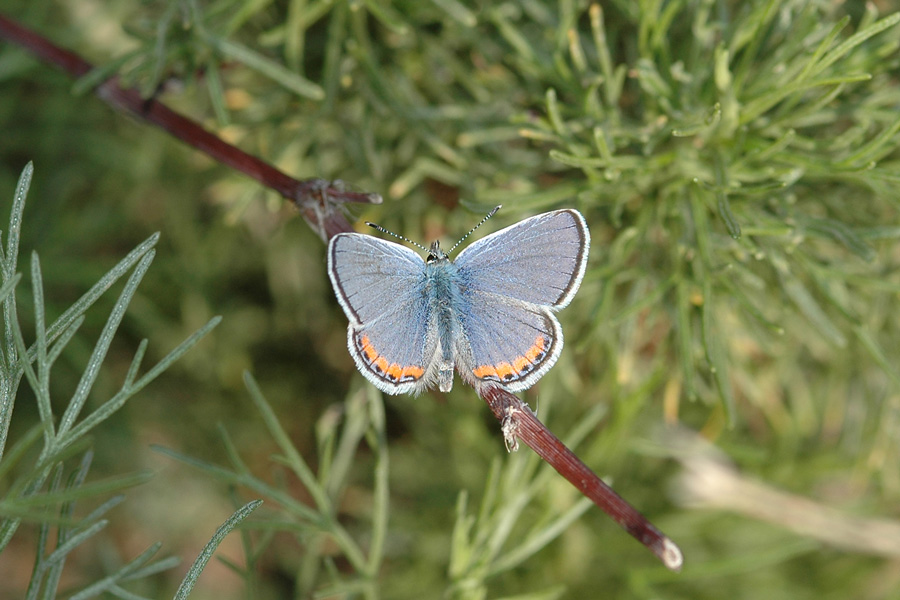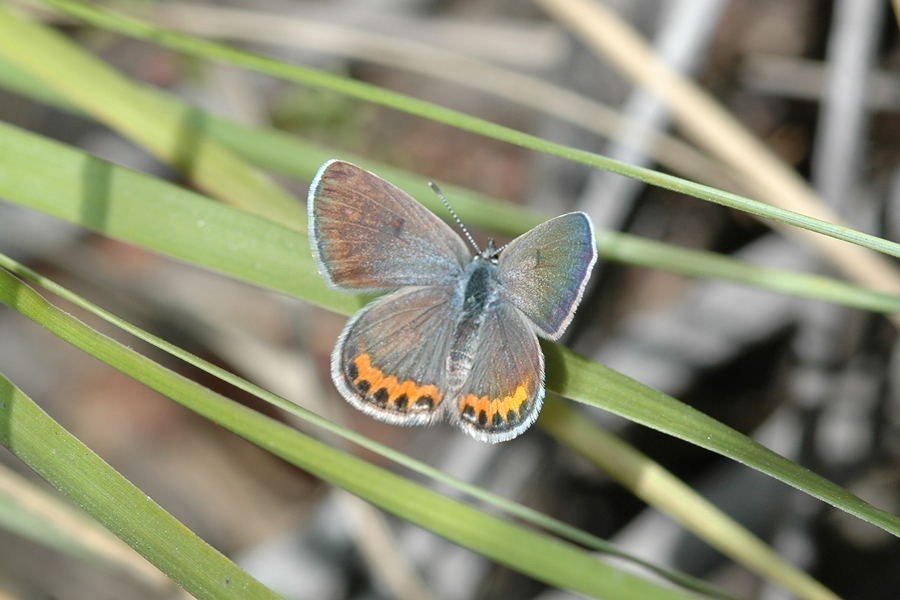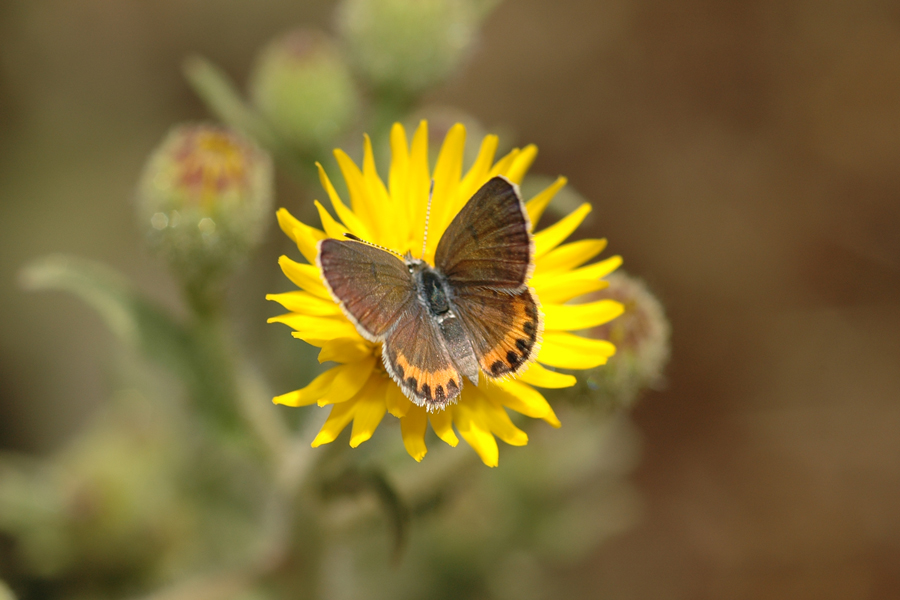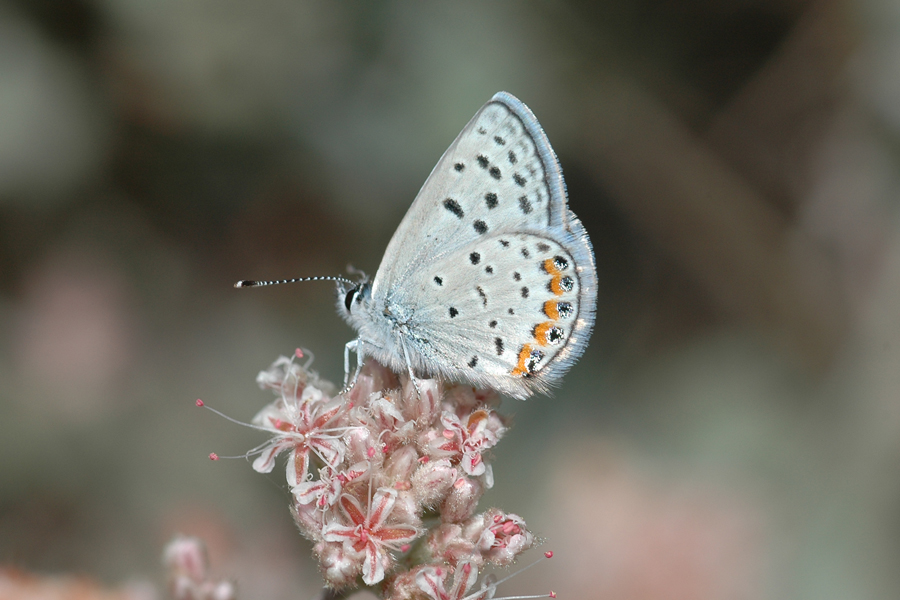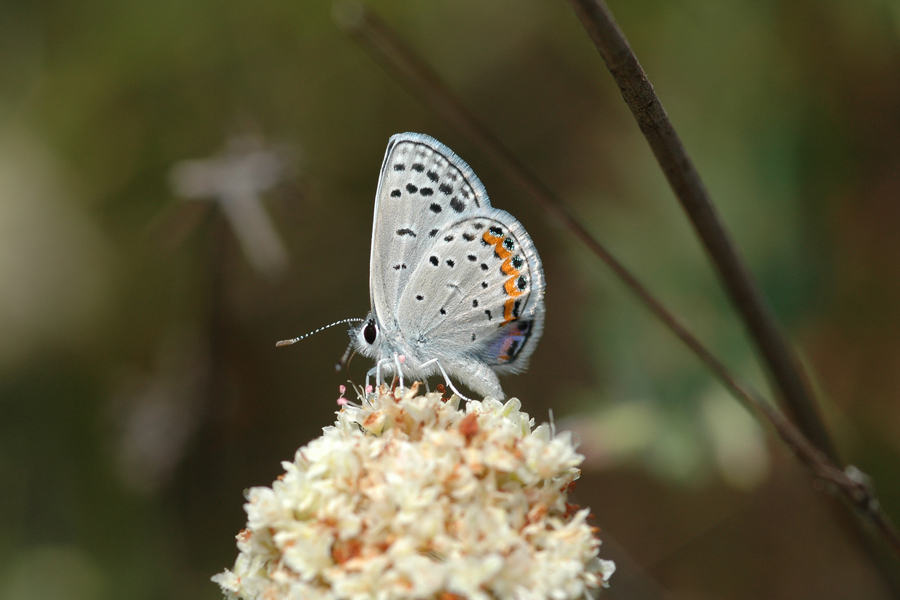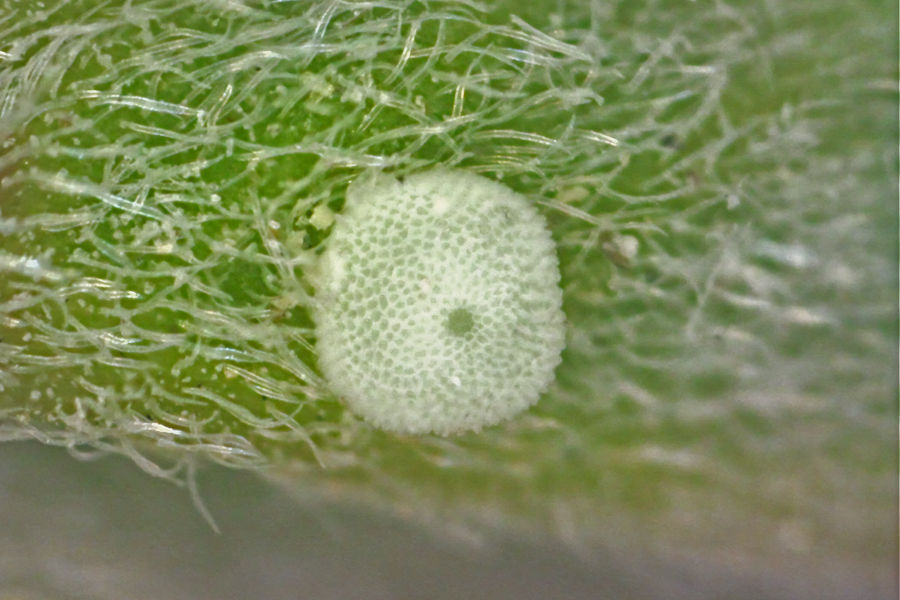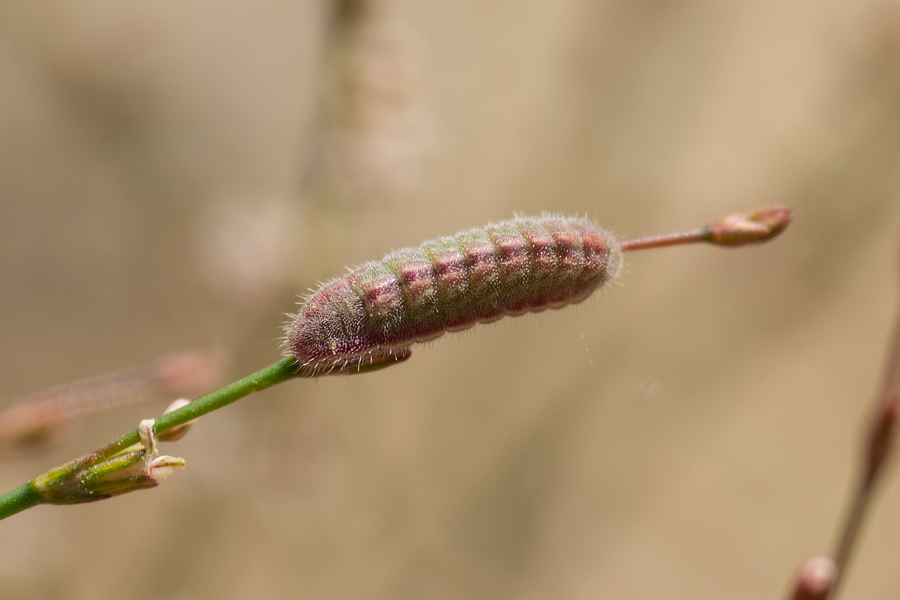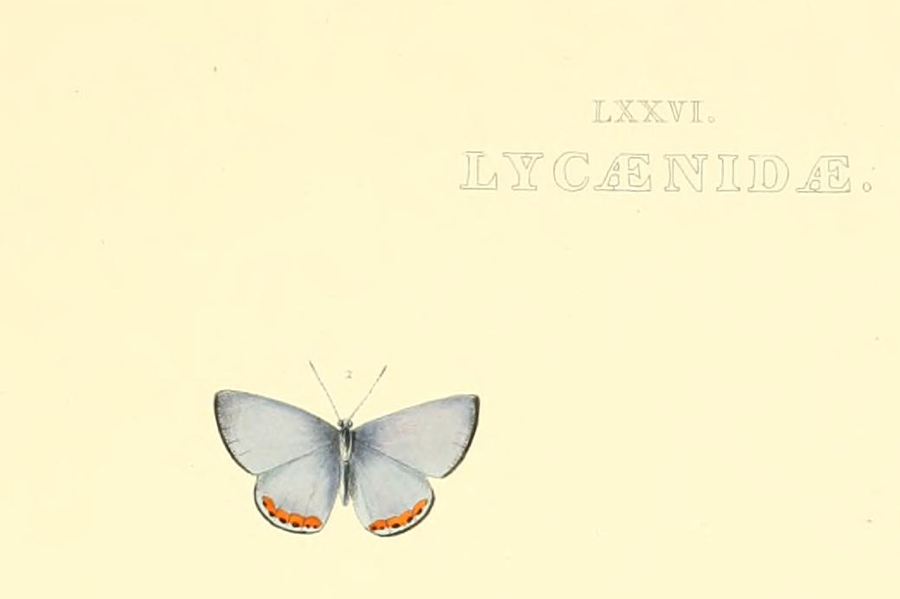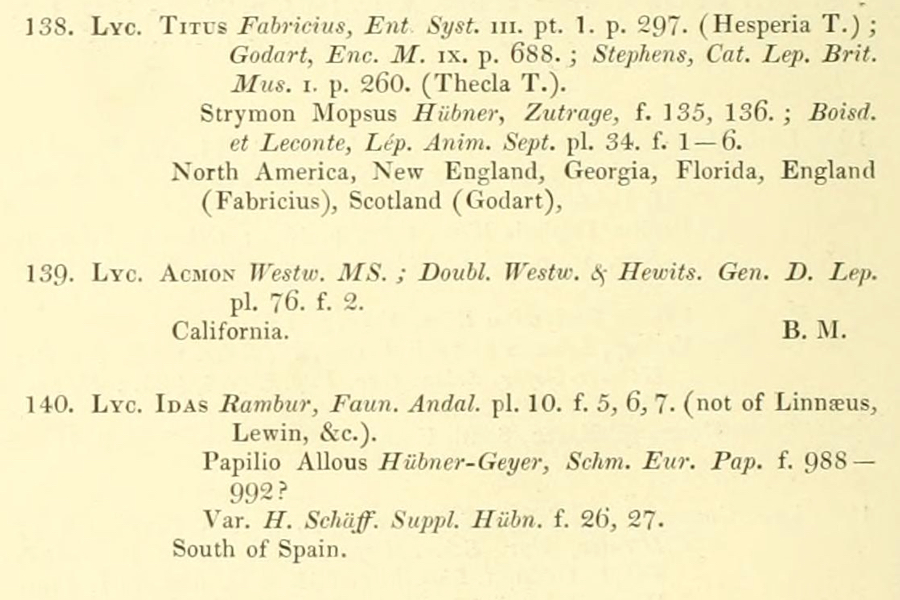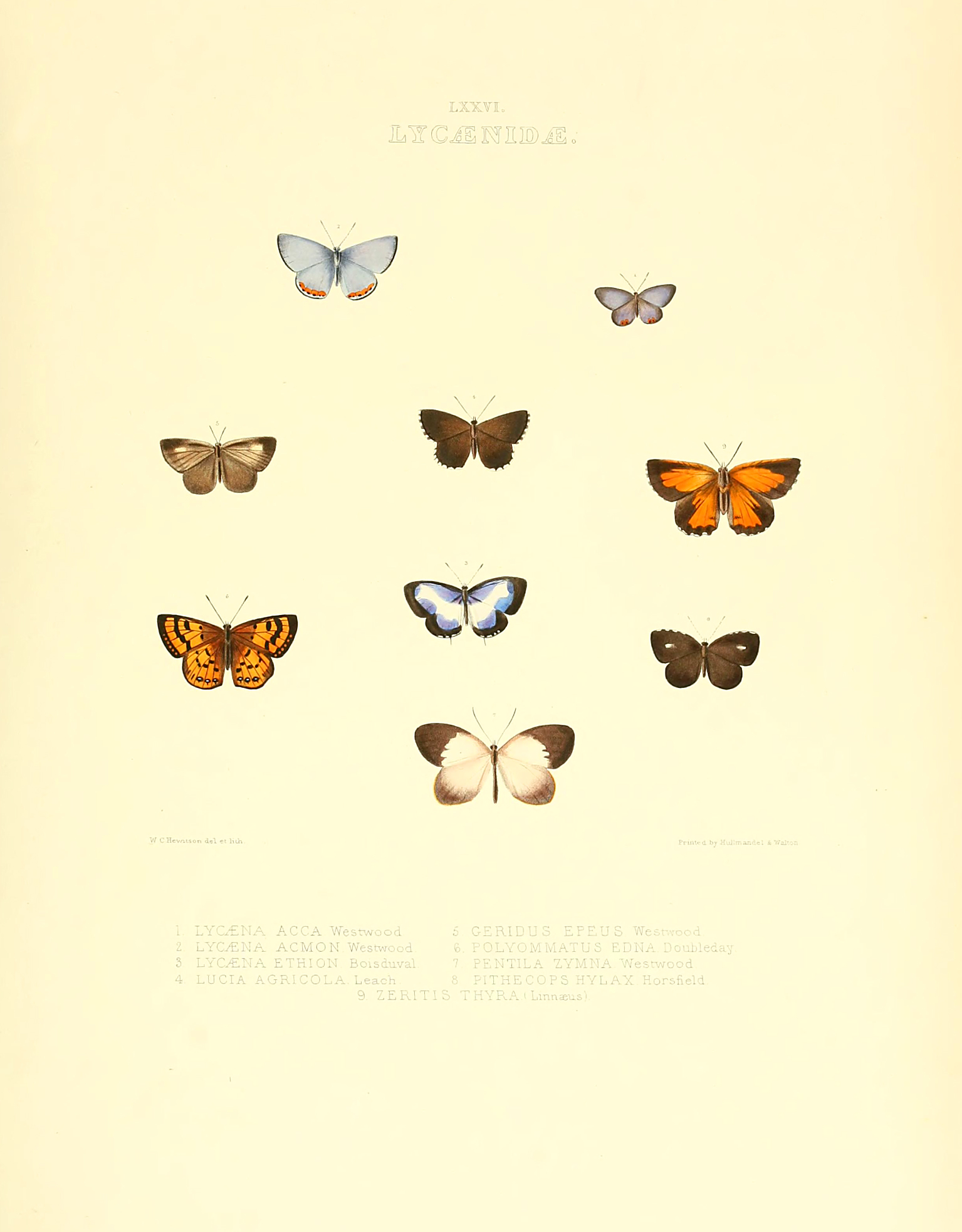Icaricia acmon
Acmon Blue
Icaricia acmon is a small blue that flies much of the year in many of the places one may go to look for butterflies in southern California, from the coast up into the mountains. That's in large part due to the many hosts it can utilize. These include several common buckwheats, and members of the pea (legume) family including lotus plants, vetches, and clovers. A butterfly that can use both deerweed and California buckwheat is going to do well here. I've read that in coastal areas, with favorable conditions, acmon may have as many as 5-6 broods in a single year.
Acmon overwinters as a pupa. When these overwintered adults emerge (often in February-March), females should be of form "cottlei": blue on the dorsal side, whereas they will be brown in the later generations (with a yellow-orange aurora on the hind wings above). According to Paul Opler, overwintered males of this early brood "are characterized by a more grayish appearance below, more blackish scaling above, and a deeper shade of blue" ("Fixation of Type Locality for Lycaena acmon Westwood and Characterization of the Species and its Distribution," Taxonomic Report 4:1 (Mar.1, 2003), p.2). This may not always hold true; some males that I've seen early are typical of later broods, when acmon males are a bright lilac blue with a pinkish to salmon-colored aurora on the hind wings above, as in the first photo below.
What we now call Icaricia acmon was collected by Pierre Lorquin early in his visit to California during the gold rush, probably around San Francisco ca. 1850. He sent specimens to Boisduval in France, who included a description of this butterfly in an 1852 paper. However, an illustration of a male acmon was published in Westwood and Hewitson's Genera of Diurnal Lepidoptera earlier that year. That specimen - now in London's Natural History Museum - may have been sent by Lorquin to London as well. Had Boisduval published his description before Westwood, this butterfly would now be his species "antaegon".
